The ‘90s was a great time to be a fan of board games. As the gaming industry began to boom, new board games were released that pushed the boundaries of how we think and what was possible with a game. The quality of the games released during the ‘90s was unprecedented, and it allowed people of all ages to get together to have fun and enjoy a challenge. With new games released every day, it was never hard to find something new and exciting to play.
The board game industry saw an explosion of creativity and innovation in the 90s. Classic games such as returned with modern updates, while new games ranging from trivia to sci-fi filled store shelves. Many of these games still remain popular today, and still are enjoyed by fans of all ages. The success of these ‘90s-era board games and their subsequent resurgence has even spawned new formats, such as digital and mobile games.
Here’s a list of some of the best board games released in the 1990s;
1. Catan (1995)

Catan (also known as The Settlers of Catan) is one of the most popular board games that attracts players from around the world even today. It is a strategy game that involves trading, building, and competing for resources. Players take on the role of settlers, each attempting to build and develop their own settlements and roads on the island of Catan. The game is designed for three to four players, but can be played with up to six players with the expansion.
The game board is made up of 19 hexagonal tiles, each representing a different terrain and resource. Players must collect and use these resources to build settlements, roads, and cities. The goal of the game is to be the first player to reach 10 victory points. Points are earned by building as well as by collecting certain development cards.
The game is highly interactive, as players are sometimes forced to trade resources with each other in order to build and develop their settlements. Players must also be strategic in their placement of settlements and roads, as they can gain access to more resourceful opportunities while blocking other players from accessing certain areas.
Catan is a great game for people of all ages. It is easy to learn but has enough complexity to keep players engaged. It is also highly replayable, as the board is randomly generated each time the game is played.
2. Tigris & Euphrates (1997)
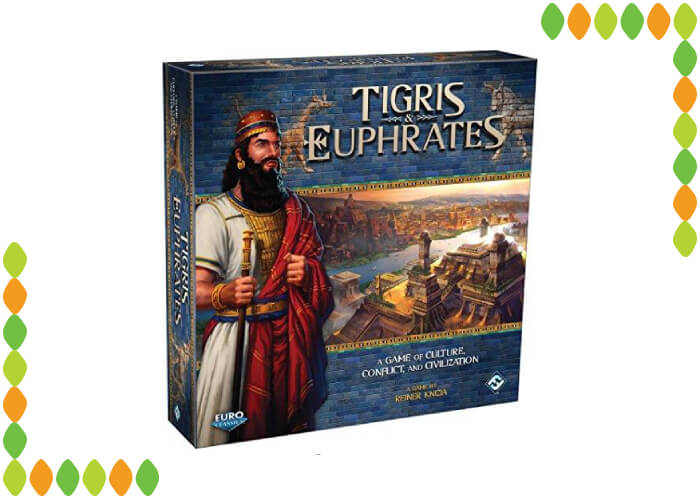
Tigris & Euphrates is a heavy strategy board game designed by Reiner Knizia and published by Hans im Glück in 1997. It is a two to four player game set in the ancient Middle East, and players take on the role of rival rulers competing for control of the region.
The game board is divided into four regions, each of which is associated with a different color. Players must build their empires by placing tiles of their color in these areas. The goal of the game is to score the most points by having the most tiles in each region, as well as having the most tiles of your color in it.
Players must also manage their resources, as they must pay for each of the tiles they place. Resources are also gained by placing tiles, and can be used to purchase more tiles or to build monuments. Monuments are special tiles that can be placed in any region, and they provide bonus points at the end of the game.
The game is highly strategic, as players must carefully plan their moves in order to gain the most points. It is also highly interactive, as players must negotiate with each other in order to gain resources and control of the regions.
3. Lost Cities (1999)
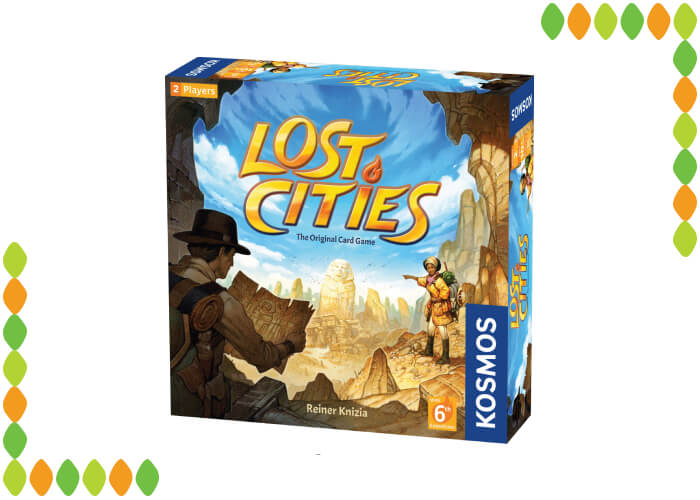
Lost Cities is a card game also designed by Reiner Knizia and published by Kosmos in 1999. It is a two-player game that can be played in about 30 minutes. The game is set in a lost world of ancient civilizations, and players take on the role of explorers trying to uncover the secrets of these lost cities.
The game is played with a deck of 80 cards, divided into five suits, each representing a different lost city. Each suit has nine cards numbered 2-10, and three special handshake cards. The goal of the game is to score the most points by playing cards to the tableau, which is made up of five columns, one for each suit.
Players take turns playing cards to the tableau, either to start a new expedition or to add to an existing one. When a player adds to an existing expedition, they must play a card of the same suit that is higher than the card already in the column. If they cannot do this, they must discard a card from their hand.
Players can also play the special handshake cards to the tableau which causes them to score double the points for it’s suit at the end of the game. This applies to negative points as well, so the handshakes could be a risk.
At the end of the game, players score points for each expedition they have completed. Completed expeditions are worth the sum of the cards in the column, minus the cost of the expedition (which is 20 by default). The player with the most points at the end of the game wins.
Overall, Lost Cities is a great two player game. It is easy to learn, but has enough strategy to keep players engaged.
4. Modern Art (1992)
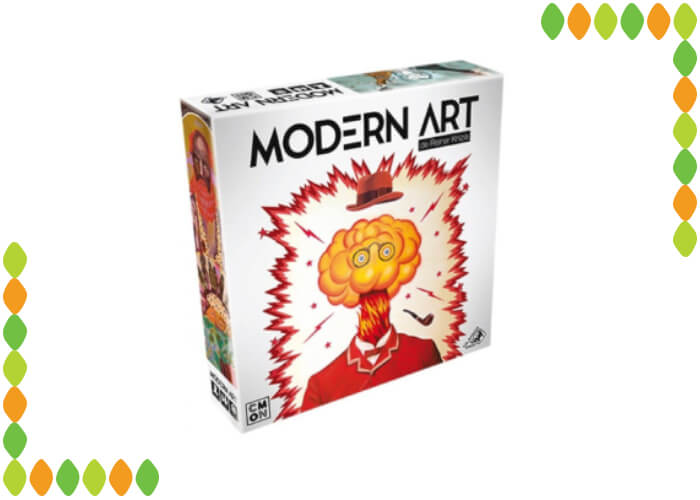
Modern Art is a classic board game of bidding and a tiny bit of bluffing, where players take the role of gallery owners and compete to buy and sell works of art in order to make the most money. The game is designed for 3-5 players and takes about an hour to play.
The game starts with each player receiving a certain amount of money, which they can use to sell works of art. In each round, the auctioneer (who is one of the players) reveals a painting and players can bid on it, based on the rule specified on the card. There are five different bidding methods in the game. The highest bidder gets the painting and the money is taken from their bank.
Once a round ends, the players can then sell them to the bank and collect money according to their value. The value of the paintings is determined by the number of paintings by the same artist that have been bought. In other words, the more popular an artist is, the more valuable their paintings become. But this popularity can change throughout the game.
Modern Art is a great game for those who enjoy bidding and economy games. It is easy to learn and can be a lot of fun. It also encourages players to think strategically and use their money wisely.
5. Chinatown (1999)

Similar to Catan, Chinatown is a game of negotiation and wheeling and dealing, where players take on the role of shop owners in a bustling Chinatown in New York. The goal of the game is to build the most profitable Chinatown by buying and selling properties, constructing businesses, and collecting rent.
The game is played on a board that is divided into several sections, each representing a different area of Chinatown with multiple land plots. Each player starts with a certain amount of money and a set of property cards. On their turn, players can negotiate with each other by trading business tiles, or land. The value of certain areas could differ throughout the game, so the players are free to buy or sell however they can. After trading, players go on to build businesses in their property. The bigger a business gets, the more rent you can collect from it.
Chinatown is played over six rounds, or six “years”, in which players collect rent at the end of each year. After the final rent collection, the player with the most money wins the game.
6. Condottiere (1995)
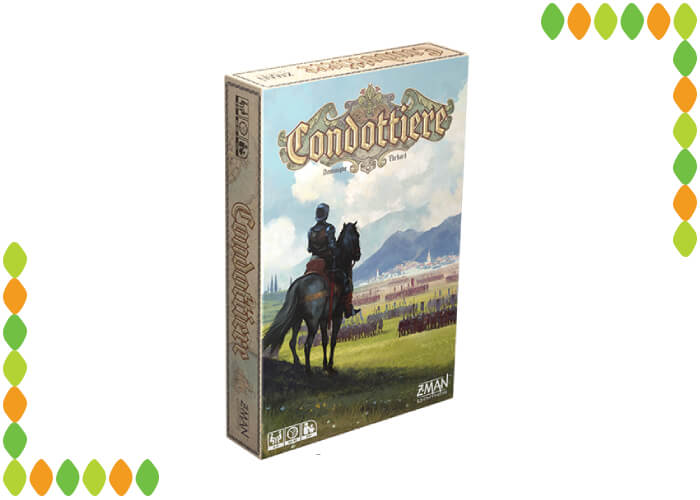
Condottiere is a great game of strategy and negotiation, and it is set in the Italian Renaissance. The game is for two to six players, and it takes about an hour to play.
In Condottiere, each player takes on the role of a powerful Italian nobleman. The goal of the game is to become the most powerful nobleman in Italy by using their armies to conquer cities. At the beginning of the game, each player gets five tokens and a hand of cards. These cards represent different forces used in battle. In each round, a city is chosen and players compete over control of that city. Turn by turn, each player adds a card from their hand to their army. These cards are different battle units that either increase the army’s military strength or cause a special effect that influences the game and the armies.
But players must be very careful when playing their cards because they will not be returned or refreshed. If a player uses all of their cards in one battle, they cannot participate in the next one. So players must think about when to use their cards when they have the most impact.
The first player to control three adjacent cities, or five cities overall wins the game.
Final Thoughts
The list goes on and on, but these were a selection of some of the best games that were published in the 1990s. What other board games do you think are worthy of being added to this list? Tell us in the comments! Also check out our lists of the best board games of the ’70s and the ’80s.


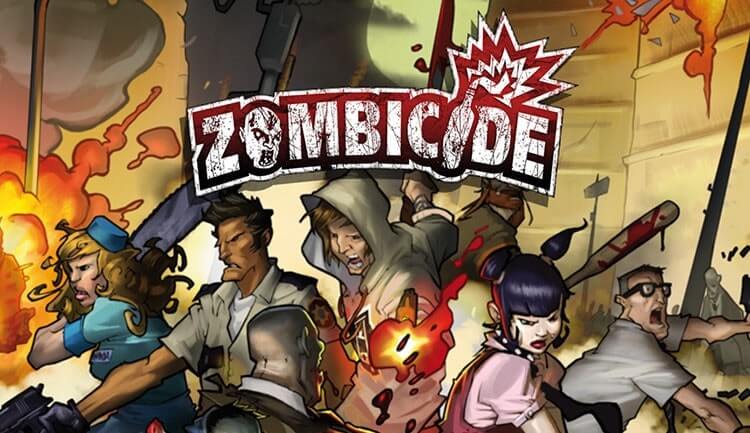

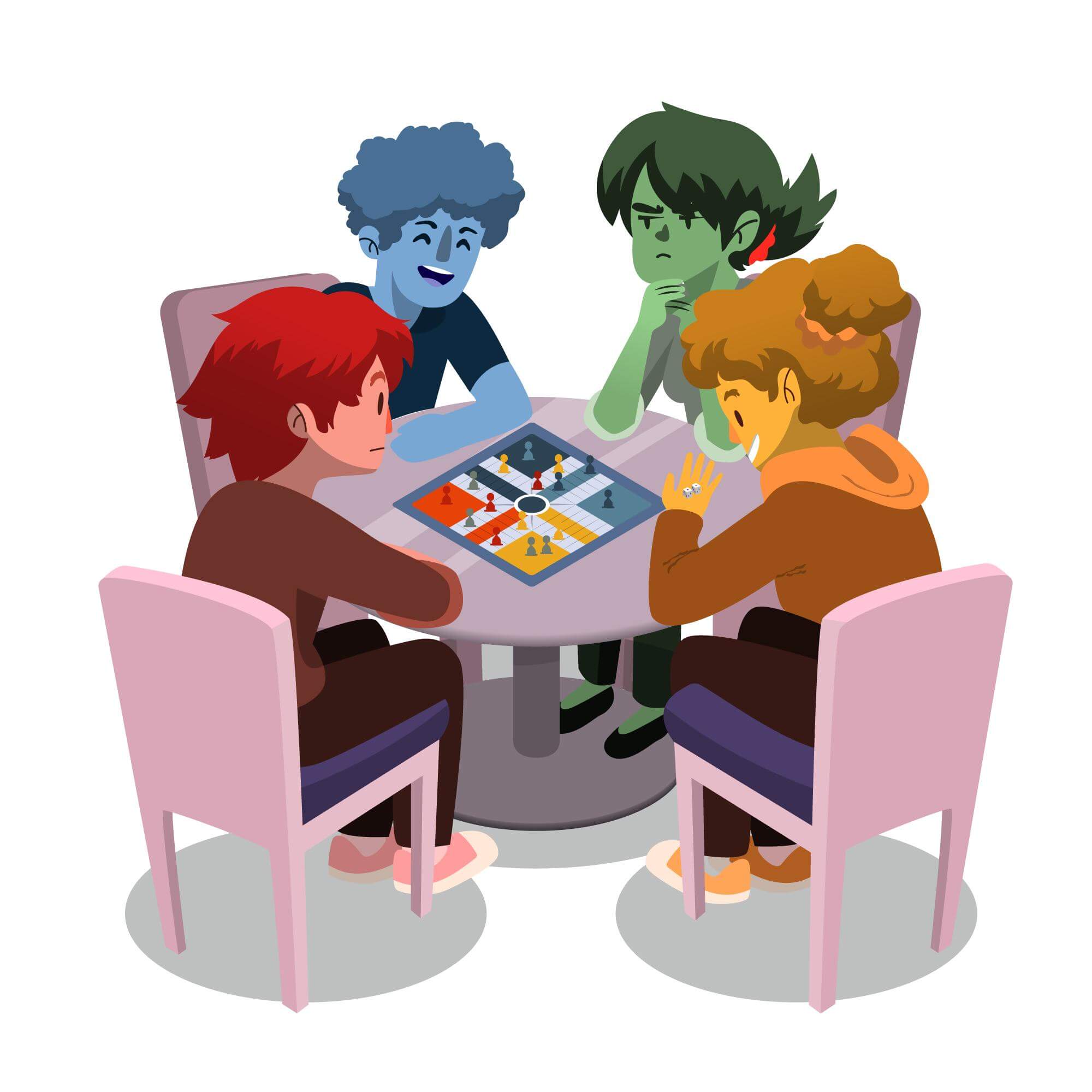

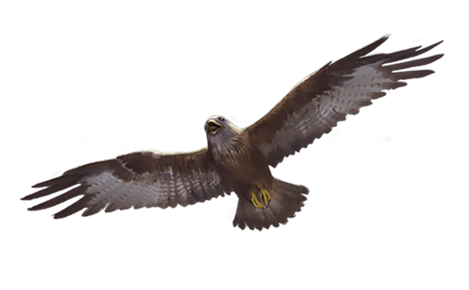
Really informative, keep it up.